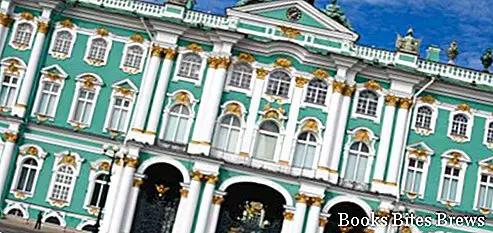What to see in St. Petersburg, itinerary including the main monuments and places of interest, including the Winter Palace, the Russian State Museum and Nevsky Prospect.
Tourist information
Second city of Russia by population and size, St. Petersburg is very beautiful and important from an artistic and cultural point of view.
It extends over numerous islands connected by bridges and on short stretches of mainland, near the mouth of the Neva river at the Gulf of Finland, it is also the main commercial port of Russia.
Founded in 1703 by Tsar Peter the Great, in 1712 it became the seat of the imperial court and capital of the Empire, it was called St. Petersburg in honor of the apostle Peter.
The project was carried out by reclaiming some marshes on the Baltic Sea, with the aim, both to thwart the nearby Swedish power, and to open the empire to the west, promoting commercial and cultural exchanges.
Distinguished European artists and architects, including many Italians, were called to collaborate in the realization of this fascinating and sumptuous work, destined to become a refined capital with European characteristics.
The immense architectural heritage enclosed in the historic center of St. Petersburg is part of the UNESCO World Heritage Sites.
The Winter Palace stands between the bank of the Neva River and the Palace square.
The current building, designed in Baroque style by the Italian architect Bartolomeo Rastrelli, is the result of the work carried out by various architects, which followed one another over a period of time ranging from 1730 to 1837.
Between 1732 and 1917 this building was the official residence of the Tsars of Russia.
The palace is part of the complex of buildings that house the Hermitage Museum, which houses one of the most important art collections in the world, mainly thanks to the sovereign Catherine the Great, very fond of art.
Recommended readings- St. Petersburg (Russia): what to see
- New Siberia (Russia): archipelago covered in ice
- Sochi (Russia): what to see in the holiday resort
- Moscow (Russia): what to see in the capital
- Russia: useful information
For those interested in Russian culture and its art, a visit to the Russian State Museum, which has its main headquarters in the Michailovsky Palace, is recommended, while other collections are exhibited at the Summer Palace of Peter, the Marble Palace , the Michajlovskij Castle and the Stroganov Palace.
What see
Saint Isaac's Cathedral, located between the square of the same name and that of the Decabrists, is one of the most interesting monuments of Russian art and neo-classical architecture of the nineteenth century.
Based on a project entrusted by Tsar Alexander I to the French architect Auguste Montferrand, construction began in 1818 and ended in 1858.
Among the largest domed buildings in the world, it has become a museum since 1931.
The Fortress of St. Peter and Paul is the citadel of St. Petersburg, the first nucleus of the city built by Peter the Great starting from 1703, designed by the architect Domenico Trezzini.
Inside the fortress there are various buildings of historical and artistic interest, including the Cathedral of Saints Peter and Paul, the Trubetskoy bastion, the Grand Ducal Crypt, the Historical Museum of the city of St. Petersburg, the Mint Museum and a factory of chocolate.
Nevsky Prospekt, the main avenue that crosses the city, starts from the Palace Square, where the Winter Palace, the General Staff Building and the Admiralty, overlook the banks of the Neva River, and ends with the stretch known as Staro -Nevsky, which leads to the Alexander Nevsky Monastery, crossing beautiful palaces and monuments, including the magnificent Kazan Cathedral, in Neoclassical style, whose construction was started in 1801 on a project by the architect Andrey Voronikhin, taking as a model the Basilica of Saint Peter in the Vatican in Rome.
Located at the corner of Nevsky prospect is the Stroganov Palace, one of the most elegant buildings in the city, built between 1752 and 1754, designed by the Italian architect Francesco Bartolomeo Rastrelli.
In the surroundings of the city there are numerous imperial residences, works of brilliant architects who have been able to harmonize the architecture of these buildings with the beautiful surrounding nature.
Among these, the Peterhof Palace, located on the shores of the Gulf of Finland, built at the behest of Peter the Great, deserves to be mentioned.
The complex, which includes various palaces and parks with many fountains, tree-lined avenues and paths immersed in the woods, is also accessible from the Baltic Sea.




